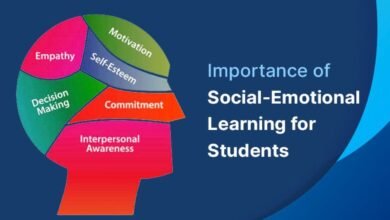How to Foster Critical Thinking in Students

Critical thinking is an essential skill in today’s fast-paced and ever-changing world. It involves the ability to analyze information, evaluate different perspectives, and make reasoned decisions. For students, developing critical thinking skills is crucial for their academic success, as well as their ability to navigate the complexities of life. Educators and parents play a significant role in fostering critical thinking in students. This article explores effective strategies for promoting critical thinking, providing practical tips and techniques that can be applied both in and out of the classroom.
Understanding Critical Thinking
Before diving into strategies to foster critical thinking, it is important to understand what critical thinking entails. Critical thinking goes beyond simply absorbing information; it requires students to engage with the content actively. It involves questioning assumptions, identifying biases, and assessing the validity of arguments. Critical thinkers do not accept information at face value; instead, they seek evidence, consider alternative viewpoints, and draw logical conclusions based on the information available.
Critical thinking is not an innate skill but rather one that can be developed over time with practice. It is a cognitive process that involves several key components, including analysis, evaluation, inference, and reflection. By honing these skills, students become better equipped to tackle complex problems, make informed decisions, and communicate their ideas effectively.
The Importance of Critical Thinking in Education
In the context of education, critical thinking is essential for several reasons. First and foremost, it enhances students’ ability to understand and retain information. When students engage in critical thinking, they are more likely to comprehend the material deeply, as they are not merely memorizing facts but actively analyzing and questioning the content. This deeper understanding leads to better retention and application of knowledge.
Moreover, critical thinking prepares students for the real world, where they will encounter complex problems that require thoughtful analysis and decision-making. Whether they are navigating social issues, making career choices, or simply managing daily tasks, the ability to think critically is invaluable. In a rapidly changing world, where information is abundant and often conflicting, the ability to discern credible sources and make reasoned judgments is crucial.
Furthermore, fostering critical thinking in students promotes intellectual independence. Critical thinkers are not easily swayed by popular opinion or persuasive rhetoric; instead, they rely on evidence and logical reasoning to form their own opinions. This independence of thought is essential for personal growth and development, as it empowers students to become self-directed learners who take responsibility for their education and life choices.
Strategies to Foster Critical Thinking in the Classroom
1. Encourage Inquiry-Based Learning
One of the most effective ways to foster critical thinking in students is through inquiry-based learning. This approach involves encouraging students to ask questions, explore different perspectives, and seek out answers on their own. Instead of providing students with information directly, teachers can present them with problems or scenarios that require investigation. By guiding students through the process of inquiry, educators help them develop the skills needed to analyze information, evaluate evidence, and draw conclusions.
Inquiry-based learning can be implemented in various ways, such as through project-based assignments, debates, and research projects. For example, a teacher might present a controversial issue and ask students to research and present arguments for and against the topic. This not only promotes critical thinking but also encourages collaboration and communication skills, as students must work together to develop and defend their arguments.
2. Promote Socratic Questioning
Socratic questioning is a powerful tool for fostering critical thinking. Named after the ancient Greek philosopher Socrates, this method involves asking a series of thought-provoking questions that challenge students to think deeply about a topic. Rather than providing answers, the teacher acts as a facilitator, guiding students to explore the topic from multiple angles and encouraging them to question their assumptions.
For example, in a discussion about climate change, a teacher might ask questions such as, “What evidence supports the idea that climate change is caused by human activity?” or “What are the potential consequences of ignoring climate change?” These questions prompt students to think critically about the issue, evaluate the evidence, and consider the broader implications of their conclusions.
Socratic questioning can be used in various subjects, from literature to science to history. It is an effective way to engage students in meaningful discussions and help them develop the ability to think critically about complex issues.
3. Integrate Problem-Solving Activities
Problem-solving is a key component of critical thinking. By engaging students in problem-solving activities, educators can help them develop the ability to analyze situations, identify potential solutions, and evaluate the effectiveness of different approaches. Problem-solving activities can be incorporated into various subjects, from math to social studies to science.
For example, in a math class, students might be presented with a real-world problem, such as designing a budget for a school event. They would need to consider various factors, such as costs, resources, and priorities, to develop a feasible solution. This type of activity encourages students to think critically about the problem, consider multiple perspectives, and make reasoned decisions.
In addition to enhancing critical thinking skills, problem-solving activities also promote creativity and innovation. Students are encouraged to think outside the box, explore alternative solutions, and test their ideas in a supportive environment. This not only helps them develop critical thinking skills but also fosters a growth mindset, where they view challenges as opportunities for learning and improvement.
4. Use Real-World Examples and Case Studies
Connecting classroom learning to real-world situations is an effective way to foster critical thinking in students. By using real-world examples and case studies, teachers can help students see the relevance of the material they are learning and encourage them to apply their critical thinking skills to real-life problems.
For example, in a history class, students might study a historical event and analyze the decisions made by the key figures involved. They would need to consider the context, the motivations of the individuals, and the consequences of their actions. This type of analysis requires students to think critically about the information, evaluate different perspectives, and draw their own conclusions.
Similarly, in a science class, students might study a case study on a medical breakthrough or an environmental issue. They would need to analyze the data, consider the ethical implications, and evaluate the potential impact of the findings. By engaging with real-world examples, students develop the ability to think critically about complex issues and make informed decisions based on evidence.
5. Encourage Reflection and Metacognition
Reflection and metacognition are essential components of critical thinking. Metacognition involves thinking about one’s own thinking process, while reflection involves evaluating one’s own learning and experiences. By encouraging students to reflect on their thought processes and learning experiences, educators can help them develop a deeper understanding of how they think and learn.
One way to encourage reflection is through journaling. Teachers can ask students to keep a journal where they reflect on their learning experiences, identify challenges they encountered, and consider how they overcame them. This type of reflection helps students become more aware of their own thought processes, recognize their strengths and weaknesses, and develop strategies for improvement.
Another way to promote metacognition is through self-assessment. Teachers can ask students to assess their own work, identify areas where they excelled, and areas where they need to improve. This type of self-assessment encourages students to take ownership of their learning and develop a growth mindset, where they view challenges as opportunities for growth and development.
6. Foster a Collaborative Learning Environment
Collaboration is an important aspect of critical thinking. When students work together, they are exposed to different perspectives, ideas, and approaches. This not only enhances their critical thinking skills but also promotes teamwork and communication.
Teachers can foster a collaborative learning environment by incorporating group projects, discussions, and peer reviews into their teaching strategies. For example, students might work together on a group project where they must research a topic, analyze the information, and present their findings to the class. This type of collaborative activity encourages students to think critically about the information, consider different viewpoints, and develop a well-rounded understanding of the topic.
In addition to enhancing critical thinking skills, collaborative learning also helps students develop important social and communication skills. They learn to listen to others, express their ideas clearly, and work together to achieve a common goal.
The Role of Parents in Fostering Critical Thinking
While educators play a significant role in fostering critical thinking, parents also have an important part to play. Parents can encourage critical thinking at home by engaging their children in discussions, encouraging curiosity, and providing opportunities for problem-solving.
One way parents can foster critical thinking is by asking open-ended questions. Instead of asking yes or no questions, parents can ask questions that require their children to think deeply and provide explanations for their answers. For example, instead of asking, “Did you have a good day at school?” parents can ask, “What was the most interesting thing you learned today, and why did you find it interesting?” This type of question encourages children to reflect on their experiences, analyze the information, and articulate their thoughts.
Parents can also encourage critical thinking by providing opportunities for problem-solving at home. For example, they might present their children with a challenge, such as planning a family outing on a budget. The children would need to consider various factors, such as cost, location, and preferences, to develop a feasible plan. This type of activity encourages children to think critically, consider different perspectives, and make reasoned decisions.
In addition to engaging in discussions and problem-solving activities, parents can also model critical thinking by demonstrating how they approach problems and make decisions. By sharing their thought processes and explaining the reasoning behind their decisions, parents can help their children develop a better understanding of how to think critically.
Conclusion
Fostering critical thinking in students is essential for their academic success and personal development. By encouraging inquiry-based learning, promoting Socratic questioning, integrating problem-solving activities, using real-world examples, encouraging reflection, and fostering a collaborative learning environment, educators can help students develop the skills they need to think critically and make informed decisions. Additionally, parents can play a supportive role by engaging their children in discussions, providing opportunities for problem-solving, and modeling critical thinking
at home. By working together, educators and parents can help students develop the critical thinking skills they need to succeed in school and beyond.



